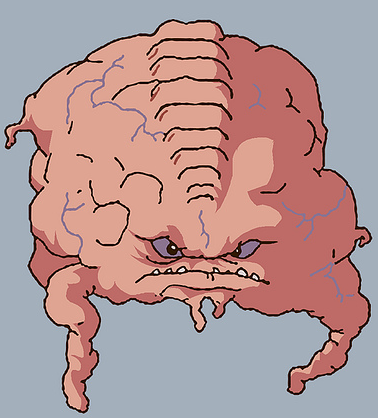We were joined today by Brian and Lukas from the Lost & Found Fungi project, based at Kew. They had come along to look for Encoelia carpini, an ascomycete (cup fungus) found on Hornbeam which looks like this:
 |
| Encoelia carpini. Image copyright Nick Aplin. Used under CC BY-NC licence. |
There are only two confirmed records for this species in the UK and one of these was from these woods next to Gatwick Airport, recorded by Nick Aplin in October 2014.
According to this handy factsheet on Encoelia carpini, its habitat is "on attached (high up) or fallen branches of Common Hornbeam Carpinus betulus".
Well, we certainly found a lot of fallen Hornbeam branches...
... and Brian & Lukas left no twig unturned in their search for Encoelia carpini.
We didn't find it. But HEY! We all know what to look for now, right?
To be honest, we didn't find a lot of anything. The woods were very dry and mushrooms were conspicuous by their absence.
This stick was a highlight for me. Such a highlight, in fact, I brought it home.
 |
| Stick |
I've been trying for ages to get my head around the difference between an 'anamorph' and a 'teleomorph'. I've read the definitions many times over:
- Anamorph – an asexual reproductive structure
- Teleomorph – the sexual reproductive structure, typically a fruiting body
The little bumps on that stick are Coral Spot Nectria cinnabarina and Nick Aplin pointed out that both the anamorph and teleomorph were present, so I brought it home for a closer look.
Here is the anamorph of N. cinnabarina.
 |
| N. cinnabarina (anamorph) |
And here it is up close.
 |
| N. cinnabarina (anamorph) |
I was trying to think what this amorphous pink blob reminds me of and then I realised it looks like Kraang out of Teenage Mutant Hero Turtles. (A nifty way to remember which is which, right? Anamorph = Kraang-amorph.)
 |
| Kraang – evil alien warlord. |
 |
| N. cinnabarina (teleomorph) |
 |
| N. cinnabarina (teleomorph) |
These two manifestations of N. cinnabarina look completely different, but they're the same species. Put the two together and you get something resembling an Eton Mess.
 |
| N. cinnabarina (anamorph and telemorph occuring together) |
(Apologies for the anamorph on the left that looks like a bum, by the way. Didn't spot that until I'd put the microscope away.)
I still don't think I've totally got my head around how fungi live their lives. But I've at least seen the difference between the anamorph and the teleomorph here – my little victory for today. It doesn't help that the books all seem to use different terminology. Some texts talk about the teleomorph as the 'perfect' stage and the anamorph as 'imperfect'; although this seems unnecessarily judgemental. The Collins Complete (photographic) Guide also talks about N. cinnabarina's "conidial stage", referring to the anamorph which produces asexual spores ('conidia').
If I can remember all that, I'll be happy!
Another interesting sighting from this morning's foray was this bracket fungus. No, not a Ganoderma (no brown spores in evidence here). Nick Aplin identified this as Perenniporia fraxinea.
We also had a good rootle round in this reedbed, hoping for fungi fruiting in the damp bits.
 |
| The Sussex Fungus Group in a reedbed with Brian Douglas. |
Apart from that, we saw a few of the fungus kingdom's 'greatest hits': Blushing Bracket Daedaleopsis confragosa, Cramp Balls Daldinia concentrica, Yellow Fieldcap Bolbitius titubans and (I think) Spindleshank Gymnopus (=Collybia) fusipes. Also an obscure tiny beige 'Disco' – some kind of Orbilia species. But I feel like I'm definitely not ready for the Orbilia.
Still a very interesting morning, despite the lack of fungi. And a very pleasant stroll back along the River Mole.
Thanks to Rachel Bicker, biodiversity consultant based at Gatwick Airport, for explaining a bit about the the management around the river Mole and the conservation activities that Gatwick Airport and the Gatwick Greenspace Partnership are involved in delivering on site. And thanks to Nick for organising.
For the record
Date: 8/10/2016
Location: River Mole, north of Gatwick Airport
Grid ref: TQ2641
All records to be submitted by Nick Aplin on behalf of Sussex Fungus Group



Very clear explanation of anamorphic and teleomorph, a subject which so confused mycologists for two hundred years that they had separate names for the two forms adif they were separate species. Organisms were reproducing without sex for a billion years before the whole messy business of exchanging genetic material evolved. Fungi have wisely kept both sexual and asexual reproduction going as alternative choices.
ReplyDelete